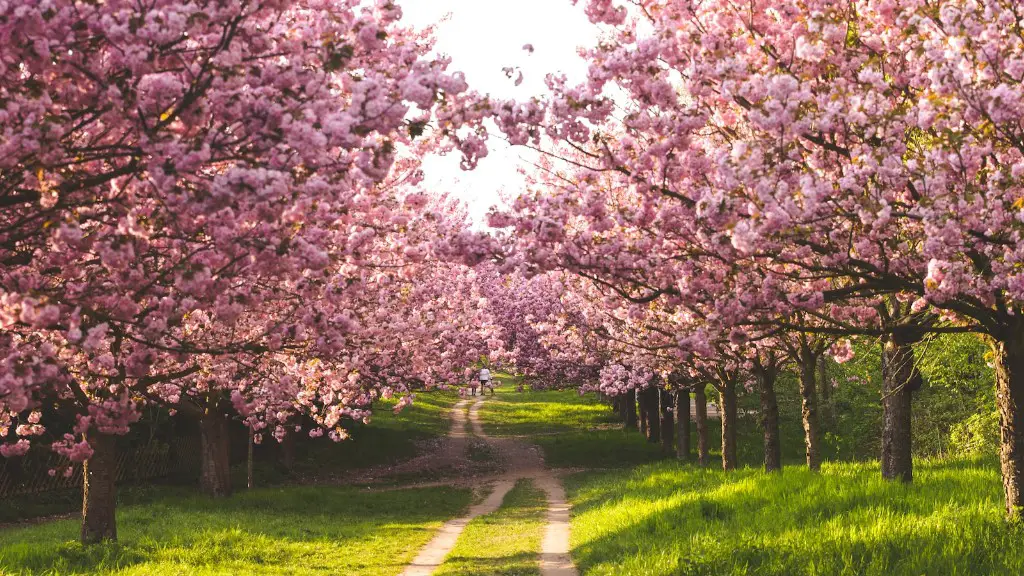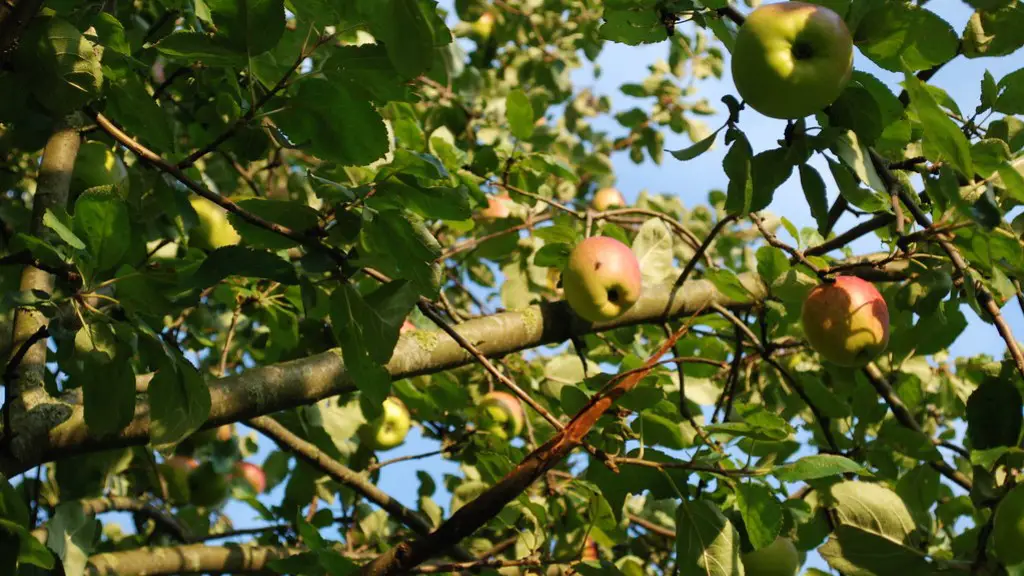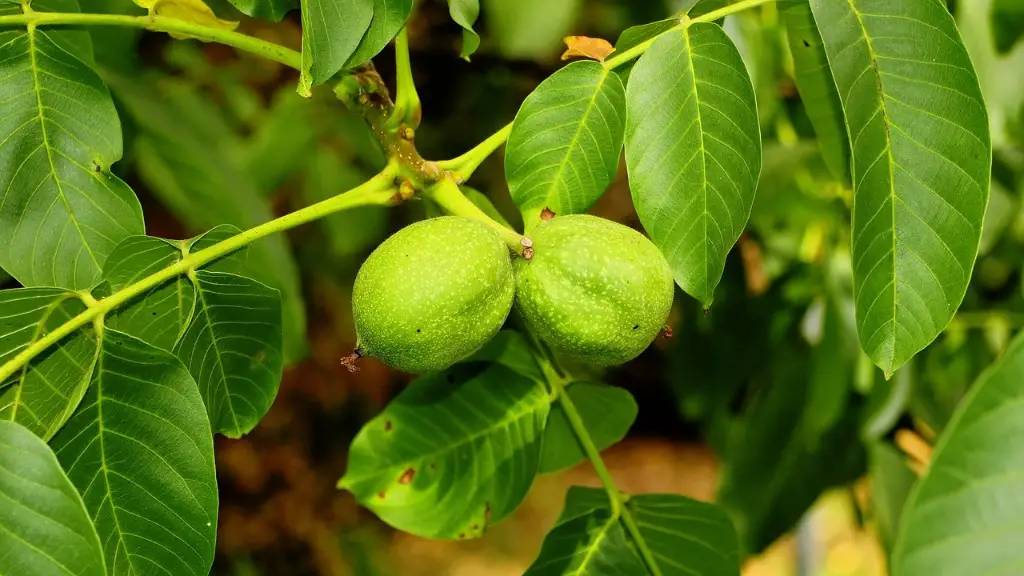Background and Reasons for Planting a Japanese Cherry Blossom Tree
Japanese cherry blossom trees, or ‘sakura,’ have long been a beloved symbol in Japan and around the world. As a timelessly beautiful species, the Japanese cherry blossom tree has exuded beauty, symbolism, and elegance for generations, and has come to represent a connection between the physical realm and beyond. The petal-like flowers of the Japanese cherry blossom tree bloom with vibrant colors of pink, white, and red, not only stunning to the eye, but drawing in the soul of anyone who sets their sight upon them. Because of their unique beauty, many people have sought to plant a Japanese cherry blossom tree of their own in their own gardens. Here, we will explore the reasons for planting such a tree, and provide guidance on how to do just that.
Reasons for Planting a Japanese Cherry Blossom Tree
Planting a Japanese cherry blossom tree is a great way to feel connected to a larger sense of beauty, while also enjoying the beauty of the tree and its lovely blooms (typically between February and March) in one’s own garden. The beauty of the cherry blossom tree is so captivating that it has been featured in countless works of art, literature, poetry, and other forms of expression over the centuries. Even beyond its unique beauty, the tree also holds religious significance in a number of major world religions, being revered as a symbol of spiritual power and renewal. For these reasons and more, many people choose to plant a Japanese cherry blossom tree in their own gardens.
Selecting the Right Type of Tree
When planting a Japanese cherry blossom tree, it is important to make sure to select the right type of tree for the climate in which it will be planted. While the species of tree is the same all around the world, climate conditions and other factors may affect the longevity of the tree, so it is important to select a variety that is best suited for one’s local climate. There are numerous options to choose from, including the popular ‘Kurume’ variety, which is well-suited to temperate climates in countries like the United States, as well as other varieties like ‘Yamazakura’ or ‘Kanzan’ which are more cold-hardy and suitable for colder climates.
Preparing the Soil & Site Conditions
When preparing the soil and site conditions in preparation for planting a Japanese cherry blossom tree, it is important to make sure the soil has adequate drainage, as cherry blossoms need well-draining soil in order to survive. To achieve this, it is a good idea to mix some clay, compost, and fertilizer into the soil, as this will help to ensure it can support the tree, as well as ensure all necessary nutrients are available for the tree’s growth. Additionally, it is important to make sure the site is in a sunny area, preferably one that receives full sun for at least six hours a day.
Planting & Caring for the Tree
Once the soil and site conditions have been suitably prepared, it is time to actually plant the Japanese cherry blossom tree. When selecting a location to plant the tree, it is important to make sure the roots will not disturb any existing plants or trees, and make sure the soil is firmly filled around the tree once it has been planted. Once the tree has been planted, it requires appropriate care in order to stay healthy and produce beautiful blooms year after year. This includes providing the tree with ample water and light, pruning it when necessary, and fertilizing it once or twice a year.
Common Problems & Solutions
While Japanese cherry blossom trees are relatively easy to care for, they are occasionally susceptible to certain fungal diseases or insect infestations. Fortunately, with proper care and attention, these problems can usually be avoided. However, if the tree does become affected by any such issues, the best solution is usually to apply an appropriate fungicide or insecticide to the affected area. In more extreme cases, it may be necessary to prune severely affected branches or remove the tree altogether. In any case, it is important to consult with a local expert or arborist before taking any action.
Propagation & Growing From Seeds
In addition to planting a Japanese cherry blossom tree from purchased stock, it is also possible to propagate the tree by taking cuttings or growing it from seed. While it is possible to purchase cherry blossom tree seeds online, it is important to make sure they are of a high quality, as low-quality seeds may not yield desirable results. When sowing seeds, it is important to make sure they are planted in well-draining soil, and that they are moist but not wet. Additionally, it is important to make sure they are covered lightly with soil and lightly watered every few days.
Treating Insects & Pests
Insects and pests can occasionally be a problem for Japanese cherry blossom trees, but with proper care and attention, these issues can usually be avoided. The key to preventing infestations is to make sure the tree is healthy and well-maintained with adequate fertilization and pruning. Additionally, it is important to keep an eye out for any signs of pests or insect activity and take action immediately if any such signs are observed. Treatment options range from physical removal of pests and insects to chemical interventions, like pesticides.
Exposure to the Elements
Since Japanese cherry blossom trees are planted in open, exposed areas, it is important to ensure the tree is properly protected from the elements. This means making sure the tree is situated in a sheltered location, and providing additional protection from strong winds and intense sunlight. Additionally, it is important to protect the tree from extreme temperatures, both hot and cold. Applying mulch around the base of the tree can help to protect it from strong winds and protect its root system from extreme temperatures.
Pruning & Maintenance
Pruning is an important part of keeping a Japanese cherry blossom tree healthy and producing beautiful blooms. Pruning should be done in the early spring, just before the blooming season, and should be done with caution in order to avoid damage to the tree and its flowers. Pruning should be done to create a pleasing and aesthetic shape, while also removing any dead or diseased branches, allowing light to reach the interior of the tree, and promoting optimal health and growth. Additionally, it is important to water the tree regularly, fertilize it annually, and inspect the tree for signs of pests or disease.


